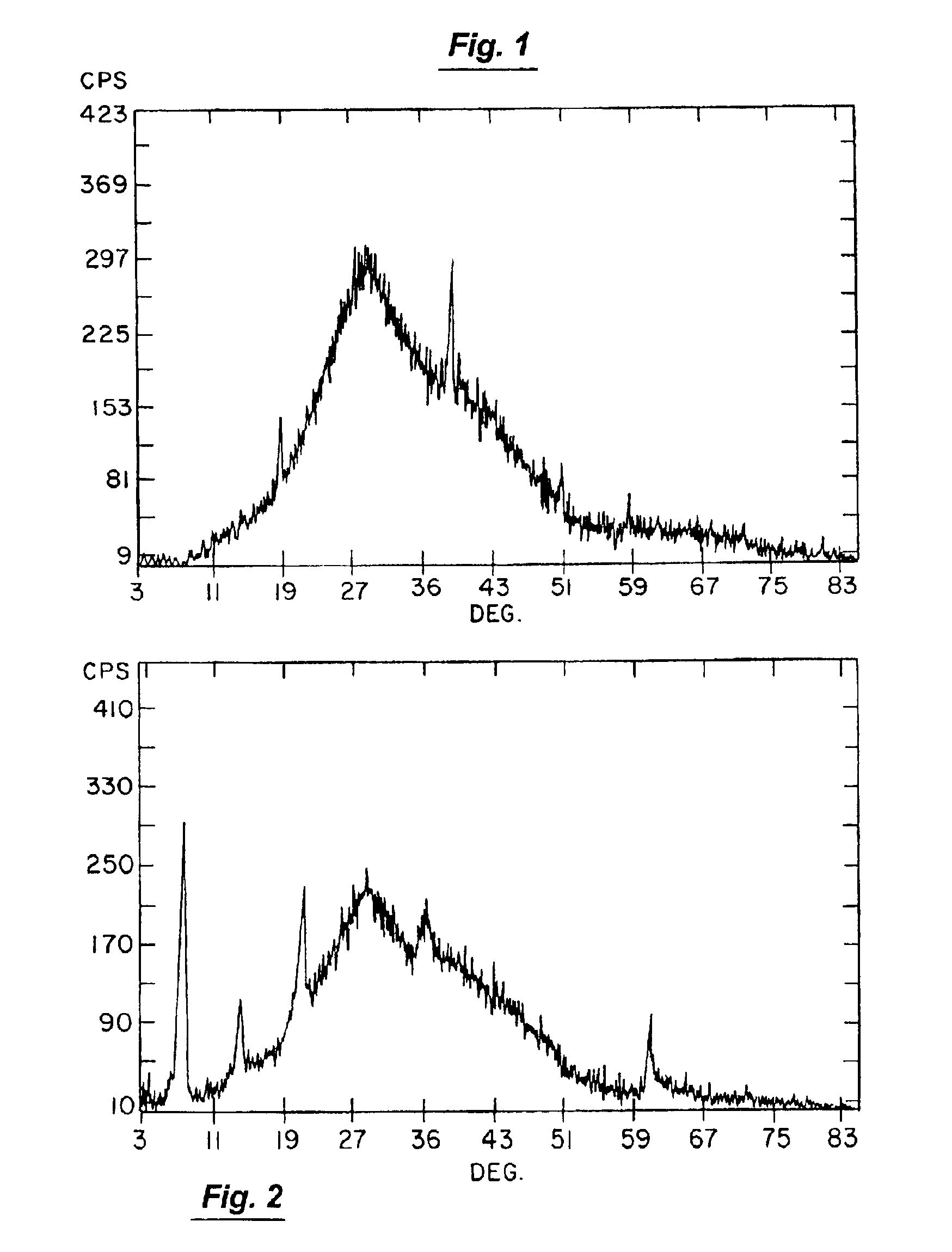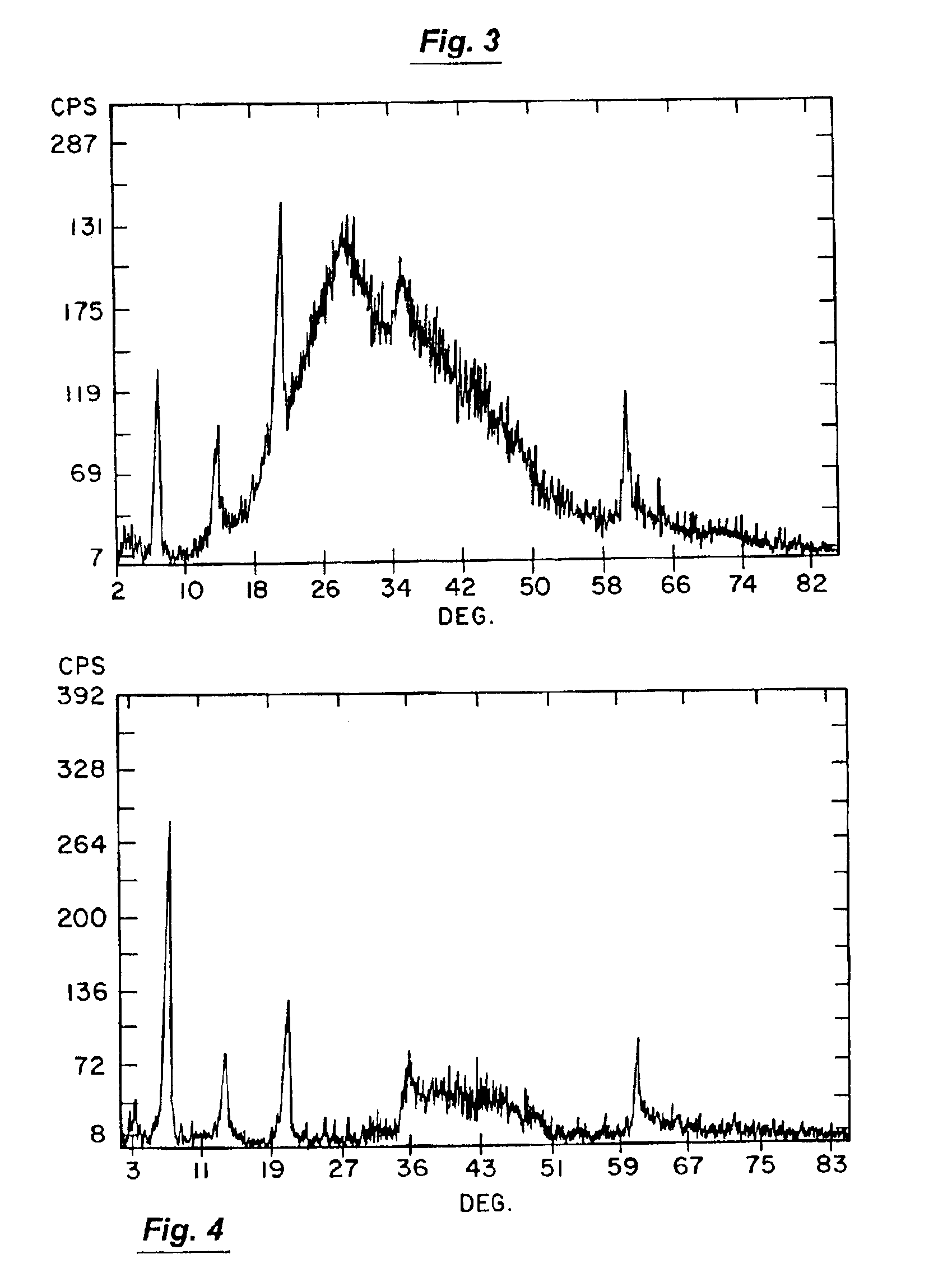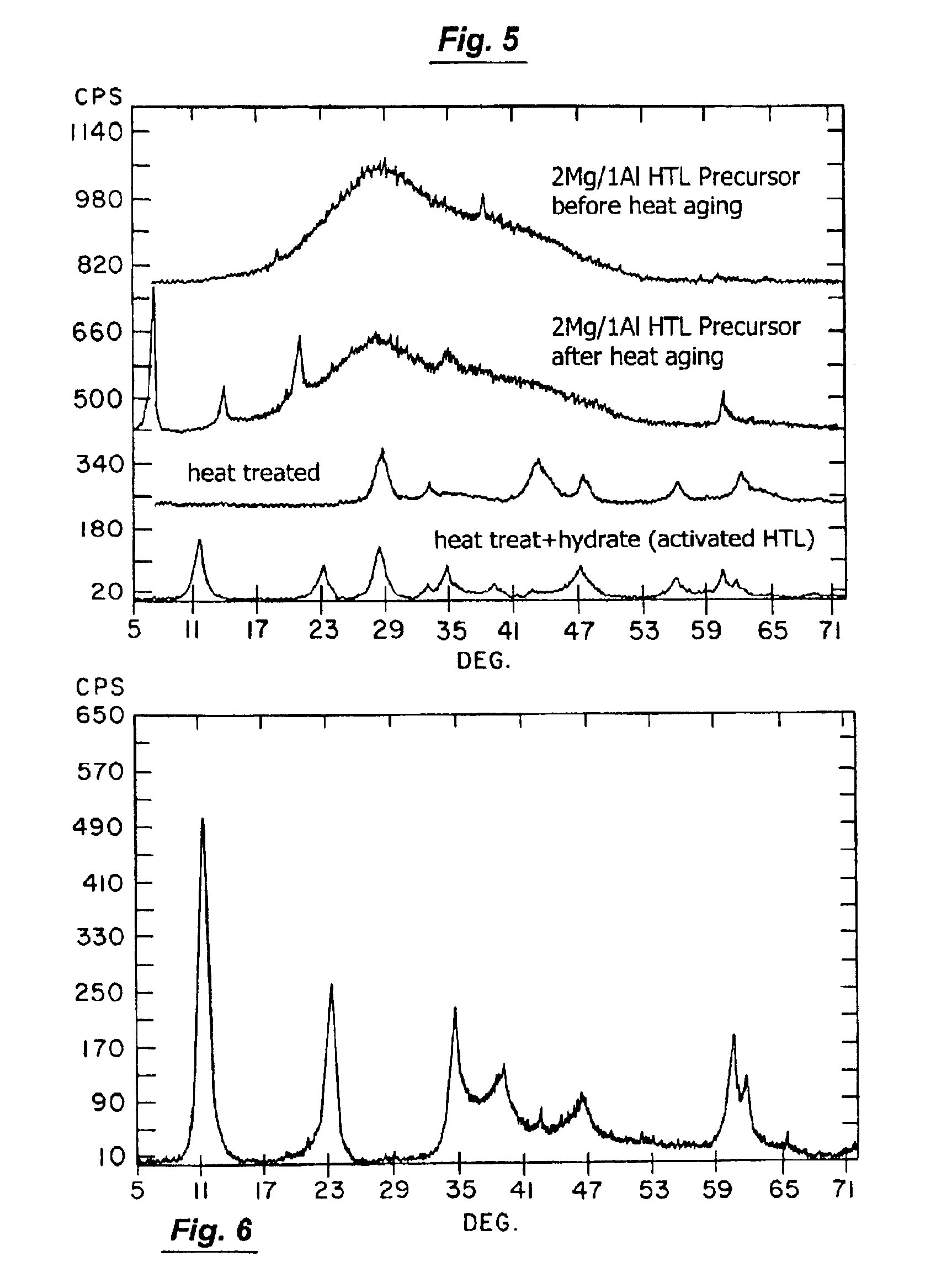Compounds, compositions and methods to reduce SOx emissions from FCC units
a technology of anionic clay and fcc unit, which is applied in the field of anionic clay making methods, can solve the problems of longer rehydration and no longer being able to form the original hydrotalcite-like compound, and achieve the effect of ensuring the life of the catalyst or sorbent system
- Summary
- Abstract
- Description
- Claims
- Application Information
AI Technical Summary
Benefits of technology
Problems solved by technology
Method used
Image
Examples
first embodiment
[0128]Some particularly useful aluminum-based compounds for creating applicant's HTL compounds will include aluminum acetate, aluminum nitrate, aluminum hydroxide, aluminum carbonate, aluminum formate, aluminum chloride, hydrous aluminum silicate and aluminum calcium silicate. In the case of this invention, these magnesium-containing compounds and aluminum-containing compounds should be employed such that the product of their initial reaction does not produce the HTL compound that will ultimately be produced by applicant's invention. By way of example only, HTL compound formation by this initial reaction can be thwarted at this point in the production process by employing any synthesis-influencing factor selected from the group consisting of (1) use of less reactive magnesium-containing and / or less reactive aluminum-containing compounds (e.g., use of hydroxides instead of acetate forms of magnesium), (2) use of particulate ingredients rather than those in true solution, (3) use of r...
second embodiment
[0147]The effects of increased temperature of applicant's activation process with respect to crystal structure was also studied. This study verified the literature's pronouncements with respect to the temperature at which spinel is formed from hydrotalcite. For example, applicant subjected a commercially available hydrotalcite compound to such a rising temperature regime in order to verify the temperature at which spinel is formed from hydrotalcite. The commercially available hydrotalcite was Alcoa's HTC-30® product (which has a 3:1 Mg / Al molar ratio and is therefore well suited to use in applicant's invention), and it was subjected to temperatures that ranged from 250° C. to 1200° C. This test showed MgO-like phase formation commencing at 400° C. and spinel formation commencing at 900° C.
[0148]The results of some other analogous heat treatments, carried out at higher heat treatment temperatures, is presented in FIGS. 11 and 12. In these increased temperature studies, a 732° C. temp...
PUM
| Property | Measurement | Unit |
|---|---|---|
| Temperature | aaaaa | aaaaa |
| Temperature | aaaaa | aaaaa |
| Temperature | aaaaa | aaaaa |
Abstract
Description
Claims
Application Information
 Login to View More
Login to View More - R&D
- Intellectual Property
- Life Sciences
- Materials
- Tech Scout
- Unparalleled Data Quality
- Higher Quality Content
- 60% Fewer Hallucinations
Browse by: Latest US Patents, China's latest patents, Technical Efficacy Thesaurus, Application Domain, Technology Topic, Popular Technical Reports.
© 2025 PatSnap. All rights reserved.Legal|Privacy policy|Modern Slavery Act Transparency Statement|Sitemap|About US| Contact US: help@patsnap.com



